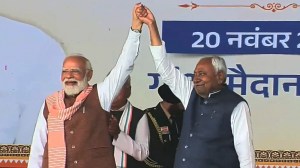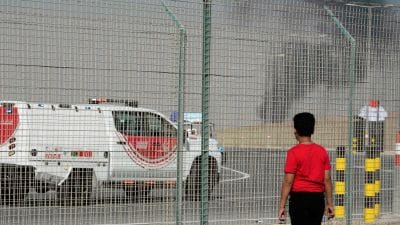UP CM Yogi reviews Ayodhya Master Plan, asks officials to check ‘unplanned growth’ in temple city
Reviews Ayodhya Master Plan-2031 proposals, says future development in the city must adhere to regulatory framework
 Chief Minister Yogi Adityanath during a Janata Darshan programme in Lucknow (Express Photo)
Chief Minister Yogi Adityanath during a Janata Darshan programme in Lucknow (Express Photo)Uttar Pradesh Chief Minister Yogi Adityanath said on Tuesday that there was the need to check instances of unplanned settlements and carving of plots in Ayodhya amid rapid development in the temple city.
Reviewing proposals for the Ayodhya Master Plan-2031, the CM asked the officials concerned to check this pattern strictly, saying all future development in the city should conform to the Master Plan and the regulatory framework.
The plan, he said, aimed to establish Ayodhya as the spiritual capital of the world through a planned, systematic, and sustainable growth. Discussing the plan proposals, the Chief Minister said under the Ayodhya Vision-2047, the city will be showcased as a hub of knowledge and festivals, with all modern urban amenities. It will feature pilgrim-friendly infrastructure, diversified tourism, historical circuits, and heritage walks, he added.
The land-use allocation in the city was 52.56% for residential, 5.11% for commercial, 4.65% for industrial, 10.28% for public, 12.20% for transport, and 14.31% for green and open spaces, the CM was informed.
Adityanath directed that the share of mixed-use and industrial land be increased, and land be reserved for different purposes along the Panchkosi and 14 Kosi Parikrama Marg. Officials said Ayodhya’s population, currently about 1.1 million, is expected to reach 2.4 million by 2031 and 3.5 million by 2047.
The Master Plan includes the development of new residential townships, a grand entry gate, multi-level parking, 84 Kosi Parikrama Marg, a greenfield expressway, a ring road, an airport, a temple museum, a solar power plant, hotels, and other civic amenities.
As many as 159 projects worth Rs 8,594 crore have been approved in the area under the Ayodhya Development Authority. These projects, the CM said, will create employment opportunities for local youth and boost the regional economy.
Modernisation of transport and hospitality infrastructure will offer world-class facilities to pilgrims and tourists, the CM said, instructing the officials to develop parking facilities, including bus and truck terminals, on the routes leading to Lucknow, Prayagraj, Gonda, and Ambedkar Nagar. He also directed that land be reserved for sewage treatment and solid waste management, encouraging innovations and indigenous models in these areas.
Adityanath stressed that Ayodhya’s development should stand as a model not only for religious tourism but also for economic, cultural and social advancement. He said every project must ensure environmental sustainability, with measures in place to protect the Saryu riverbanks and green belts.
Describing Ayodhya as a symbol of India’s soul, the Chief Minister said it should be developed as a confluence of faith, beauty, and prosperity for generations to come.







